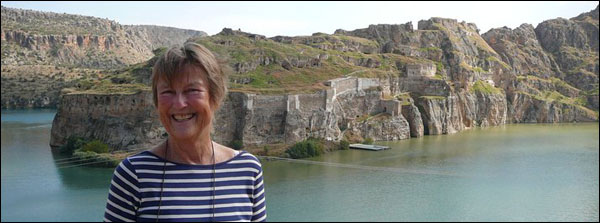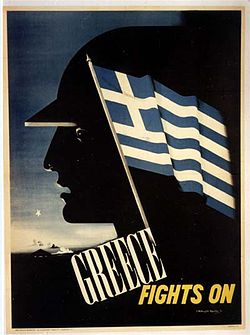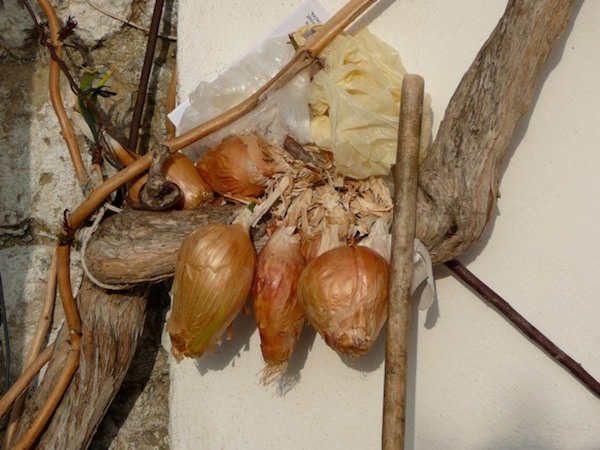Crisis Food (Still in Crisis)

“Athens, where hundreds were dying of starvation on the streets every day in the winter of 1942, may not be the right place to begin. God forbid that such horrors ever occur again. But rural Crete, where some staples could always be scrounged, held some surprising answers.”— Diana Farr Louis
Eating Well Is The Best Revenge
By Diana Farr Louis

Note: This column first appeared in the 6/6/2011 edition of Weekly Hubris.
ATHENS Greece—(Weekly Hubris)—2/9/2015—These days, with rumormongers predicting Greece’s imminent financial meltdown, I thought it might be useful to look to the past for guidance. How did people cope, what did they eat, during those bleak years of war, occupation, and utter poverty in the 1940s?
Athens, where hundreds were dying of starvation on the streets every day in the winter of 1942, may not be the right place to begin. God forbid that such horrors ever occur again. But rural Crete, where some staples could always be scrounged, holds some surprising answers.
One October evening, just before the turn of the millennium, I happened to be in the mountain village of Anoyeia, sniffing out recipes for my Cretan cookbook.* The first snowfall had already dusted the peaks of Mount Psiloriti, so when I peered into a taverna window and saw a fire blazing, I went in to get warm. The couple who owned the place were chatting with an elderly shepherd. They invited me to join them on a hearthside bench padded with thickly woven rugs bearing geometric designs in soft reds and burgundies. The antlered skulls of long-dead deer and mountain goats decorated the walls. This far into autumn, the tourist season, with its day-trippers to Zeus’s birthplace in the cave higher up the mountain, was over and they hadn’t expected anyone but a few locals to pass by. Soon, we were talking about why I was there and the conversation quickly shifted from politics to food, particularly “nostalgia food”—the things they had loved as children and the treats that had kept them going during the war.
Anoyeia, where some of Crete’s finest musicians have come from, is often hailed for its traditions, but people in search of picturesque houses and charming town squares set amidst this romantic, steep mountain setting are likely to be disappointed. Anoyeia was a hotbed of resistance and, when the Germans discovered General Kreipe’s kidnappers had hidden their prize here briefly before spiriting him off the island, they retaliated with terrible vengeance—murdering every male regardless of age and leveling every building. Only the church survived; the rest of the buildings are contemporary concrete blocks on stilts, without a single redeeming feature. Nevertheless, the women still weave and embroider, a couple of bakeries still specialize in decorated loaves for weddings and baptisms, while several tavernes serve makaronia with staka and great chunks of meat smoke-roasted in soot-blackened outdoor cooking shacks.
As we talked that night, younger men came in for a raki and joined us, eager to listen to memories not of the black side of war and poverty but of the moments that made them bearable. The dishes described with such fondness then will never be found in a taverna; many may not have been prepared since those days of necessity. Certainly, the majority do not sound very appetizing, but most of us have never been as hungry as those villagers. On the other hand, these were the meals that kept Cretan islanders healthier than their American counterparts who, even though rationed during the war, still managed to sink their teeth into white bread, red meat, refined sugar and, if not butter, then the newly invented margarine, pale and squashy in its nylon bag until you pushed and punched the red dot enough for the spread to turn a more attractive yellow.
![]()
These are some of the treats of cucina povera at its poorest. Anoyeia did not recover from the war until the early 1960s. It was only then that enough prosperity trickled in to make coffee readily available and my hosts no longer had to sell their eggs to buy salt and pepper; otherwise, except for cigarette paper, they had been self-sufficient.

Bazina: “My mother used to feed this to us kids. She made a batter with some flour, salt, and water, and stirred it in the frying pan with some olive oil. That was all there was to it. We didn’t have sugar or even honey to sweeten it.”
Mangiri: Homemade pasta, half boiled; half-fried. Making pasta—in this case, eggless noodles—can be a long, drawn out process, but on a winter evening with no TV, it became a game the whole family could play. They would boil two-thirds of the noodles in a little salted water until almost all of it was absorbed. Then they would fry the other third with two or three tablespoons of olive oil, stirring, until the pasta was crunchy. With a sprinkling of grated cheese or garlic, they’d have a meal that I wouldn’t scorn today.
Ladouridi: This sounds like dumplings. “We’d mix a handful of flour with olive oil and salt in a plate with a little water, stirring it with our fingers until it crumbled into little balls. If we were lucky we’d have some sheep’s milk instead of water. Then we’d boil some of it and fry the other half, like mangiri, and eat it with a spoon like soup.”
Kavroma: The basis for this is sheep’s or kid’s stomach, well washed and marinated for 2 hours in lemon and salt, then washed again. After that, it was cut in small pieces, brought to a boil in plenty of water until tender, and then sautéed in olive oil with lots of onions, tomato, bay leaf, pepper, and sheep’s liver. Described as being finger-licking good, it must have been quite a luxury compared to the other fare.
Psarokollyva: This fake kollyva, as opposed to the dish served at Orthodox memorial services, is a simpler mix of wheat, chickpeas, and beans, soaked overnight, boiled and drained, and dressed with some olive oil and chopped onion.
Skirozoumi: This wartime dish was nothing more than water seasoned with olive oil and salt into which paximadia (rusks) were crumbled.
Potatoes with xinohondro (trahana): Having no prejudices about adding starch to starch, Cretan villagers would try to fill their bellies with potatoes sautéed in oil with grated tomatoes (“Stir until it smells good!”) to which a little water would be added. Trahana—a rustic pasta made with cracked wheat and soured milk—would be softened in a bowl of water and thrown in at the last minute, after the water had been absorbed or evaporated. “Stir five to six times and it’s done.” This would be a good, simple supper dish even in peacetime.
Skoudourakous: There was no price on volvi, wild hyacinth bulbs pickled in oil, vinegar, salt and garlic; you just had to know where to find them.
Bahoudi: Bulgur wheat dressed with oil.
Eggplant with potatoes, tomatoes, and onions: This simple stew was such a fancy dish for poor Anoyeia, it was served at weddings up until 30 years ago.
From this list, you can see that, as long as you had wheat and barley to make flour, and olive oil to season and cook with, you would never starve. Meanwhile, with a little zestari—hot wine in a clay jug—set on one side of the hearth and another clay pot filled with fava beans or split yellow peas simmering with an onion in the coals, you could even think yourself lucky.
But don’t feel sorry for us, yet. There is an old Greek saying, “I miseria thelei kalo perasi,” or Misery needs to have a good time, so we escaped with friends to Halkida, about 40 minutes’ drive north of Athens, for a marvelous seafood extravaganza. We polished off platefuls of cherrystones on the half shell, steamed mussels, langoustines, sweet stewed cuttlefish, tiny fried red mullet, grilled squid, and seared baby scallops, ending with four large shrimp we’d seen a fisherman delivering live after we thought we’d finished. And if that was not enough, the restaurant offered dessert—squares of irresistible fudge cake and galaktoboureko (custard pie with shredded fyllo).
You might have thought there’d be no tomorrow.
*The bulk of this column was excerpted from Feasting and Fasting in Crete (Kedros, Athens, 2001).

